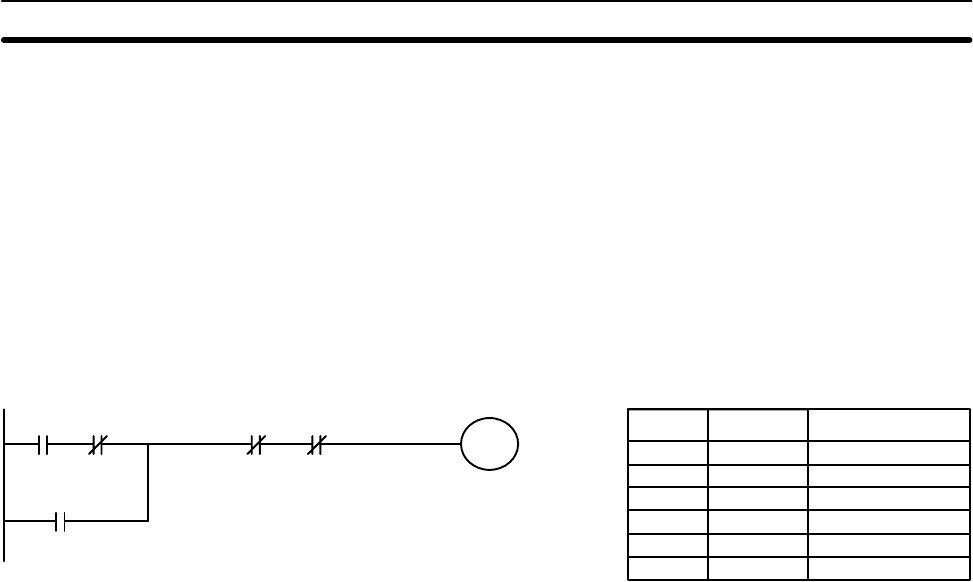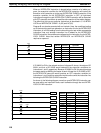
122
To create a self-maintaining bit, the operand bit of an OUTPUT instruction is
used as a condition for the same OUTPUT instruction in an OR setup so that the
operand bit of the OUTPUT instruction will remain ON or OFF until changes
occur in other bits. At least one other condition is used just before the OUTPUT
instruction to function as a reset. Without this reset, there would be no way to
control the operand bit of the OUTPUT instruction.
The above diagram for the KEEP instruction can be rewritten as shown below.
The only difference in these diagrams would be their operation in an interlocked
program section when the execution condition for the INTERLOCK instruction
was ON. Here, just as in the same diagram using the KEEP instruction, two reset
bits are used, i.e., HR 0000 can be turned OFF by turning ON either IR 00004 or
IR 00005.
00002 00003
HR 0000
HR 0000
00004
00005
Address Instruction Operands
00000 LD 00002
00001 AND NOT 00003
00002 OR HR 0000
00003 AND NOT 00004
00004 AND NOT 00005
00005 OUT HR 0000
4-9 Work Bits (Internal Relays)
In programming, combining conditions to directly produce execution conditions
is often extremely difficult. These difficulties are easily overcome, however, by
using certain bits to trigger other instructions indirectly. Such programming is
achieved by using work bits. Sometimes entire words are required for these pur-
poses. These words are referred to as work words.
Work bits are not transferred to or from the PC. They are bits selected by the
programmer to facilitate programming as described above. I/O bits and other
dedicated bits cannot be used as works bits. All bits in the IR area that are not
allocated as I/O bits, and certain unused bits in the AR area, are available for use
as work bits. Be careful to keep an accurate record of how and where you use
work bits. This helps in program planning and writing, and also aids in debugging
operations.
Work Bit Applications Examples given later in this subsection show two of the most common ways to
employ work bits. These should act as a guide to the almost limitless number of
ways in which the work bits can be used. Whenever difficulties arise in program-
ming a control action, consideration should be given to work bits and how they
might be used to simplify programming.
Work bits are often used with the OUTPUT, OUTPUT NOT, DIFFERENTIATE
UP, DIFFERENTIATE DOWN, and KEEP instructions. The work bit is used first
as the operand for one of these instructions so that later it can be used as a
condition that will determine how other instructions will be executed. Work bits
can also be used with other instructions, e.g., with the SHIFT REGISTER
instruction (SFT(10)). An example of the use of work words and bits with the
SHIFT REGISTER instruction is provided in 5-15-1 SHIFT REGISTER –
SFT(10).
Although they are not always specifically referred to as work bits, many of the
bits used in the examples in Section 5 Instruction Set use work bits. Understand-
ing the use of these bits is essential to effective programming.
Work Bits (Internal Relays) Section 4-9


















